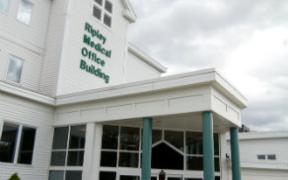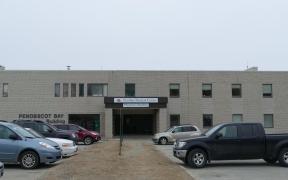A broken bone should be treated right away. Doctors at MaineHealth offer advanced technology and skilled care for diagnosing and treating patients with broken bones. Call your doctor, or visit your local urgent care clinic or community hospital, if you or a loved one has a broken bone.
What is a bone fracture?
A bone becomes broken if more pressure is put on a bone than it can stand. A break of any size is called a fracture.
What causes a bone fracture?
Accidents aren’t planned. When they do happen, it’s important to get medical care at your local hospital or urgent care center. Some common causes of bone fractures include:
- Falls
- Sports injuries
- Vehicle or pedestrian accident
- Osteoporosis, or weakened bones that can happen with age
- Overuse/repetitive motion
- Direct blow or hit
Signs and Symptoms of Bone Fractures
Signs and symptoms of broken bones include:
- Swelling
- Bruising
- Deformity
- Tenderness
- Pain that gets worse when the area is moved or pressure is applied
- In open fractures, bone protruding from the skin
- Discolored skin around the affected area
- Inability to put weight on the injured area
- Bleeding, if there is an open fracture
- Numbness and tingling
- Limited movement or inability to move a limb
A fracture often requires emergency treatment at a hospital. It may take several weeks to several months to heal depending on the injury.
X-rays Help to Diagnose Fractures
Doctors can usually recognize fractures by examining the injury and taking X-rays. In some cases, a fracture will not be visible with an X-ray. This is common with some wrist fractures, hip fractures and stress fractures. Your doctor may perform other tests, such as a computed tomography (CT) scan, magnetic resonance imaging (MRI), or a bone scan.
Broken Bone Treatment Can Include Cast or Splint
Some treatments for broken bones may include:
- Cast or splint
- Pain relievers or painkillers
- Surgery to put in plates, pins or screws to keep the bone in place
- Physical therapy to regain strength and flexibility
Safety Steps to Avoid Injuries
It is not always possible to prevent breaking a bone. But there are certain safety measures you can take to avoid injury. They include:
- Wear proper safety equipment (helmets and other protective pads) for recreational activities, such as bike riding, snowboarding, motorcycle use, or contact sports.
- Keep walkways and stairs free of objects that could cause you to trip.
- If you have osteoporosis, have regular exercise to improve strength and balance, and discuss calcium supplements with your doctor.
- When you are on a ladder, avoid using the top step and be sure you have someone holding the ladder.
- Wear your seat belt, and never drive intoxicated or ride with a driver who is intoxicated.
- Never text while driving. Make sure children ride in an appropriate car seat.































